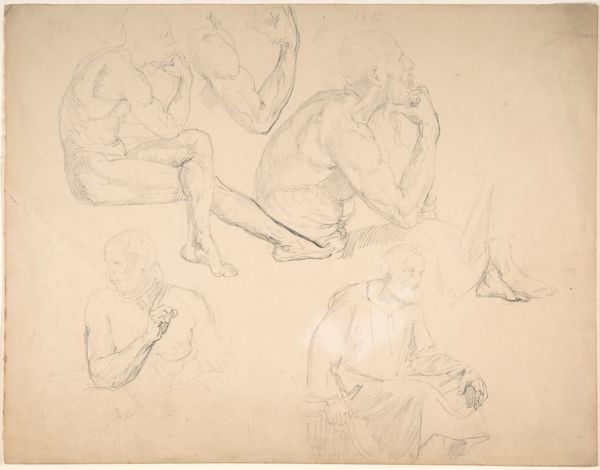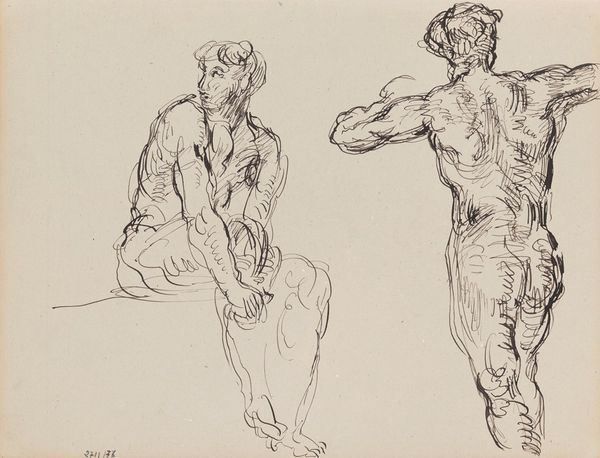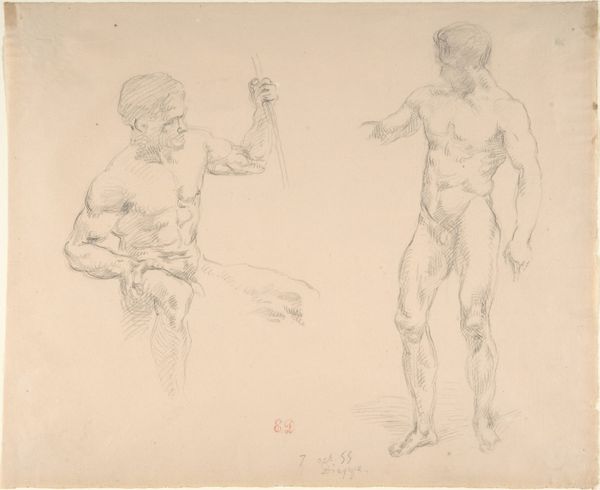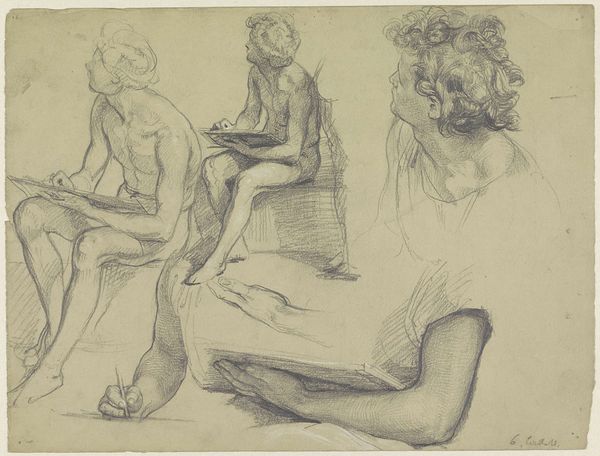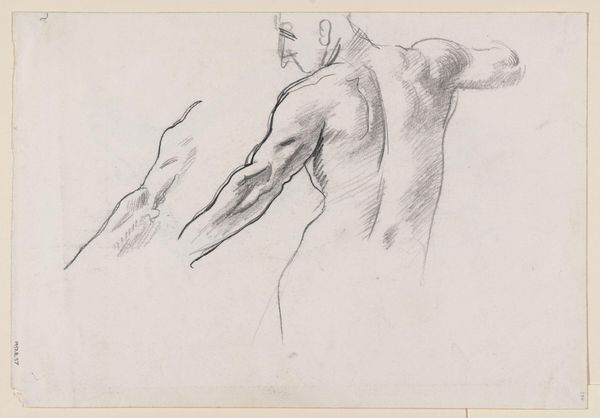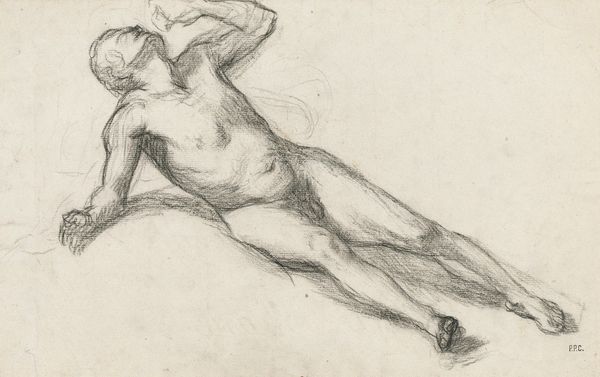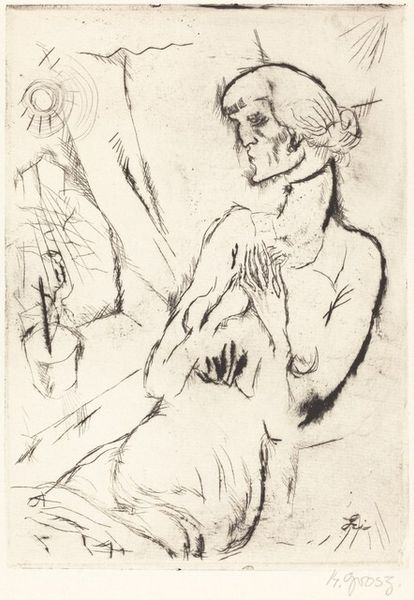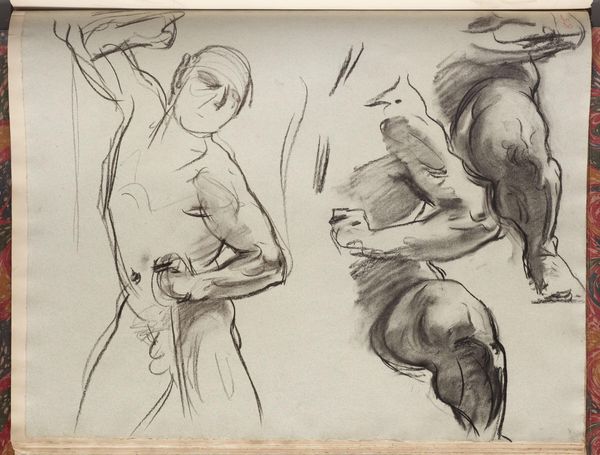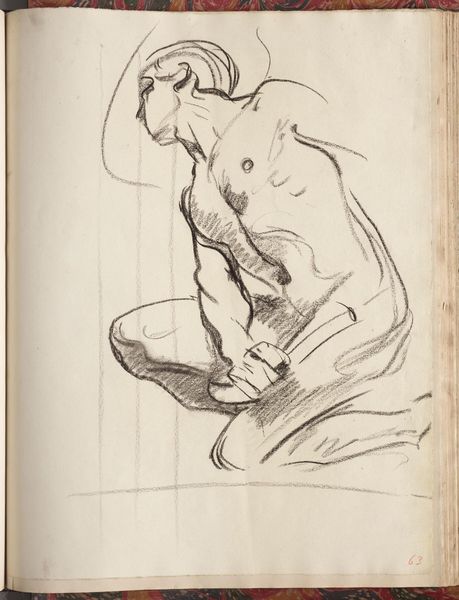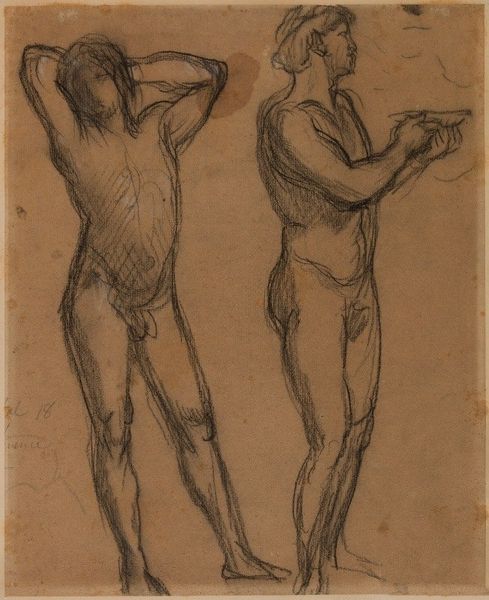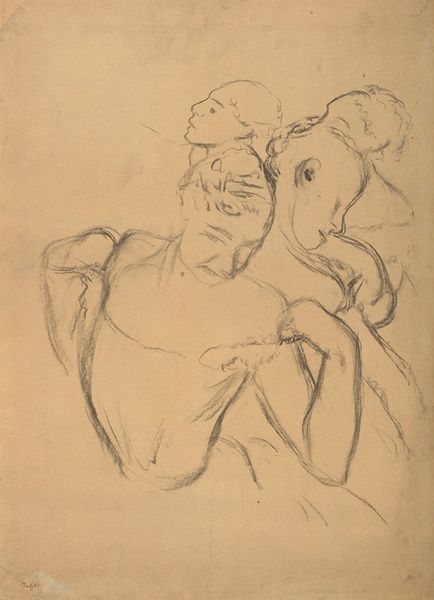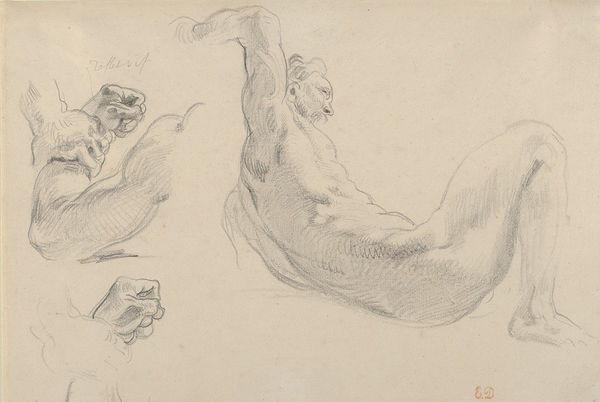
drawing
#
drawing
#
amateur sketch
#
imaginative character sketch
#
light pencil work
#
pencil sketch
#
study drawing
#
personal sketchbook
#
idea generation sketch
#
sketchwork
#
character sketch
#
fantasy sketch
Copyright: Public Domain: Artvee
Curator: This pencil sketch is by Eugène Delacroix, dating back to around 1835. It’s titled ‘Male Nude Posing for Figures in the ‘Frise de la Guerre.’' Editor: My initial impression is one of contemplation, a sort of quiet power simmering just beneath the surface. The figures, though seemingly relaxed, have this… alertness about them. It reminds me of actors preparing for a performance. Curator: Absolutely, this piece holds deep symbolic roots, reflecting Delacroix’s preparations for a larger composition: his projected ‘Frise de la Guerre.’ Each line seems imbued with tension, perhaps mirroring the psychological undercurrents associated with conflict. Editor: And the varying degrees of completion – some areas meticulously shaded, others barely hinted at – give it a fascinating layered effect. I feel like I'm catching glimpses into the artist’s process, the way he’s mapping out form and emotion simultaneously. There’s an intimacy to this style that feels deeply modern even now. Curator: His use of light and shadow isn’t just about modeling the body. Note how the highlights seem to carry as much expressive weight as the darker contours. Consider what those choices tell us about his intent regarding heroism versus suffering…it appears as a very self-conscious choice. Editor: That contrast certainly accentuates the figures' musculature, creating a powerful sense of physical presence. They're idealized, but they're not gods; they feel deeply human, almost vulnerable in their stark exposure. Do you feel it is the romantic movement’s impact here, searching the drama, but finding men? Curator: Indubitably. Romanticism always returned to humankind. Delacroix presents classical forms, yet through raw, dynamic pencil work, imbues these forms with Romantic sensibilities and sensitivities to the violence of war. Note how his ‘rough’ hand works as contrast to classical male beauty, so the figures feel emotionally raw. Editor: This feels like a profound testament to the enduring power of preliminary sketches. You almost get more than you bargained for! A fragment becomes its own revelation, you know? Curator: Precisely. This work provides a fascinating portal. One we may understand through an exploration of cultural memory regarding not only classical forms, but more profoundly, by bearing witness to art’s continuous adaptation through history.
Comments
No comments
Be the first to comment and join the conversation on the ultimate creative platform.
